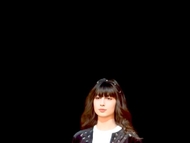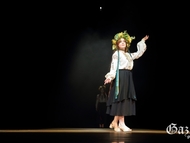 ‘Oh, East is East, and West is West, and never the twain shall meet’
‘Oh, East is East, and West is West, and never the twain shall meet’Rudyard Kipling
On first arriving here in Korea five years ago, that old adage of Rudyard Kipling’s seemed to have a certain ring of truth about it: everything in the East, at least in regards to Korea, seemed to run contrary to the western mores I was so accustomed to in Ireland and elsewhere.
The language barrier was the first obvious obstacle to confront the innocent abroad, but there were other traits that ran contrary to my own thinking. For one thing, the squatting on the floor of a restaurant over dinner or the fact that it was considered strange to eat alone in a Korean restaurant. The food dishes themselves were unusually fiery on the palate in comparison to the bland cuisine I was nourished on back home.
And then there was the bombardment of seemingly impertinent questions from both students and my new Korean co-workers: ‘How old are you?’ ‘Are you married?’ ‘Why not?’ ‘Why did you come to Korea?’ ‘Do you have a girlfriend?’ ‘Why not?’ ‘How many people are there in your family?’ ‘Where are you from?’ ‘Where is that?’ It was enough for a Northern Irishman with an identity crisis to revert to type when feeling cornered and yell: ‘NO SURRENDER!’ or at least to try and reason with oneself by keeping Kipling’s words of wisdom in mind and know your place.
But Kipling’s famous quote was of course written in a different era, an era that is fast-receding and giving way to a new found sense of freedom of choice and movement nowadays. Kipling was born into and belonged to an age of imperialism, a time when old regimes were vying for world dominance and whose raison d’être was based on the exploitation of far-flung peoples and expansion into their lands. Both Ireland and Korea suffered under such rapacious regimes, each for different reasons, perhaps, and under different sets of circumstances. Nevertheless, a similar set of parallels can be arguably drawn up regarding the histories of both countries in the aftermath of a colonial presence.
As any undergraduate of history might be able to tell you, making a comparison of any two histories can be fraught with problems, especially of two countries that are so widely apart both geographically and culturally as that of Ireland and Korea. But since getting over my initial series of ‘culture shocks’ and interrogations in Korea and acclimatizing at least to some degree with the people and their customs, some Koreans I’ve met have been eager to point out the similarities between Ireland and Korea. For one thing, there is the obvious division of North and South in both countries; there are also the years of economic hardship both countries endured following ruthless civil war and years of stagnation in the ensuing postcolonial period; and there is the fact of a ‘Diaspora’, a scattering of large numbers of the native populace across the globe away from their traditional boundaries.
Perhaps it’s because of such historical similarities between that of my own country and that of Korea that I have come to recognise and appreciate some of the attitudes of the people of my host country. But despite any argument by analogy, the fact remains that some significant differences do exist. The North–South border in Ireland, for instance, is gradually becoming a mere anachronism within the larger framework of a more unified Europe and the continuing Northern Ireland peace process. I am free to travel unhindered across the Irish border nowadays without the menace of a military presence or the self-consciousness of trespassing on enemy territory. This is in obvious stark contrast to the present North-South Korean situation, which has remained in stalemate now for over half a century. But even here there is renewed optimism, especially in light of President Roh Moo-Hyun’s recent diplomatic visit to the north of the peninsula last month. From the Irish experience, such tentative moves and bold gestures do bear fruition, given time.
Whether such optimism is justified or not in today’s political world, what is evident is that the world at large is changing at a more rapid pace than ever before in human history. So much so, that one can no longer draw up the old distinctions on the map that separated North from South or East from West. Only a generation ago it was still common for an unemployed Irish worker in a depressed economy to ‘go West young man’to the United States in search of a job and a better quality of life. Likewise, in the industrial graveyards of the North of England, it wasn’t unusual for the redundant collier or factory worker to ‘head down South’usually to London with its own distinctively deprived East End and more opulent West End. Today those distinctions are less evident and the migratory routes have extended around the globe. This has been due to a number of factors such as the collapse of the Berlin Wall, which in turn has brought a flood of East Europeans to the West, and to the ‘tiger economies’of East Asia, which has encouraged a counter-flood of Westerners to come to Asia.
Even here in Korea, with its reputation as a former ‘Hermit Kingdom’, it is hard not to encounter several westerners on any given day. The same can be said for the travelling Korean who, more frequently than ever before, is visiting the West for any number of reasons, from business to pleasure or to experience the benefits of being immersed in a second language (usually English) for a year. Given such movement of people and meeting of such cultural exchanges, it is no longer reasonable or even desirable to settle for East being East, or any other point on the compass being in its place. It would seem the needles of the compass are in flux, spinning with the rest of the world.
By Prof.Nigel McClatchey
Dept. Keimyung Intensive Teacher Training
Dept. Keimyung Intensive Teacher Training








